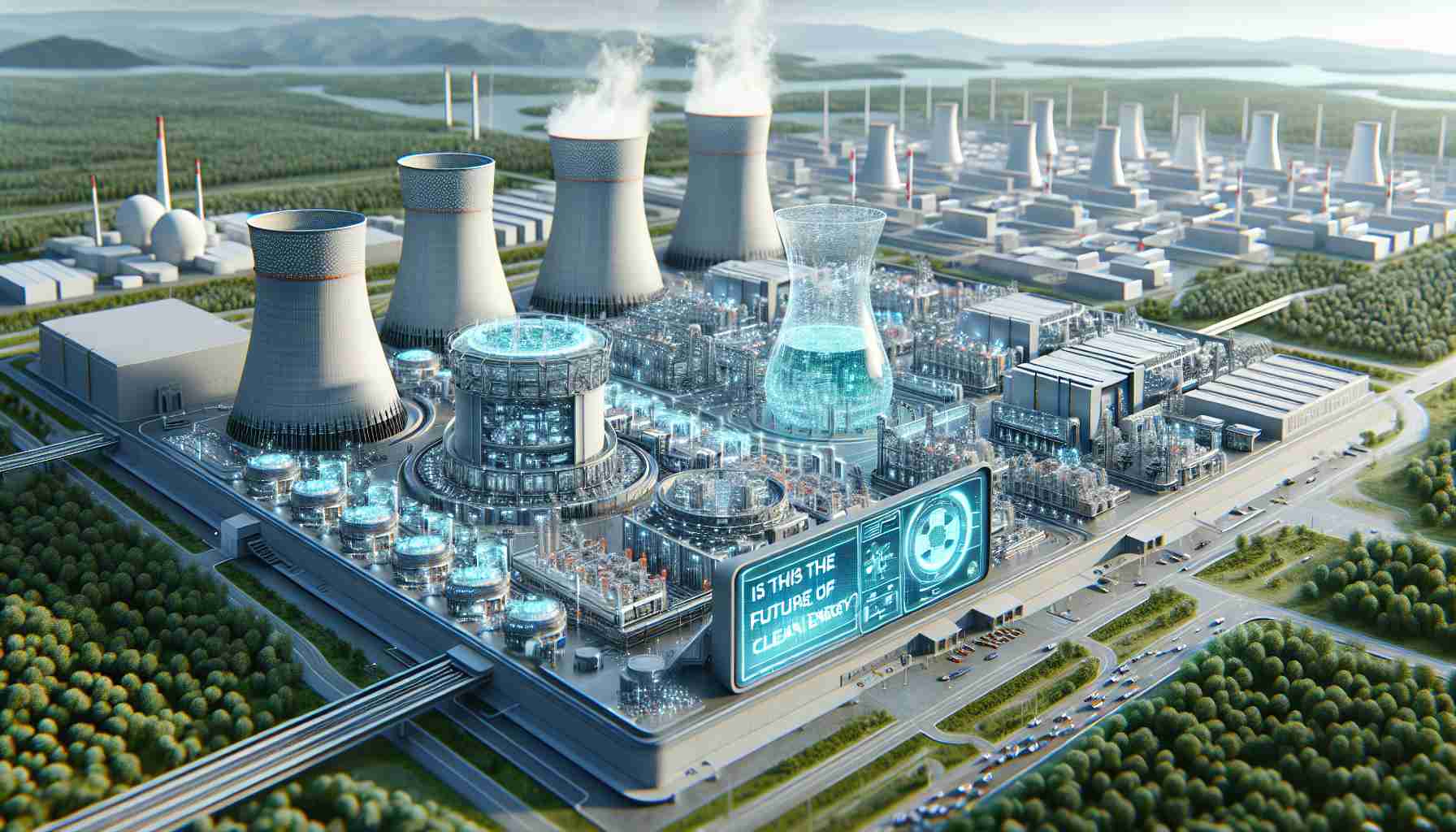Three Mile Island, Pennsylvania – The notorious Three Mile Island nuclear plant, known for its infamous partial meltdown in 1979, may soon see a revival as Constellation Energy gears up for a monumental project. After several years of dormancy, the facility’s iconic cooling towers are set to undergo a transformation aimed at supporting Microsoft’s burgeoning data center needs.
The plant, which fell silent after the last reactor’s shutdown in 2019, has become a haven for nature, as wildlife now roams what was once a bustling facility. However, executives are reporting optimism about the potential for a restart. Constellation has recently secured a significant 20-year power contract with Microsoft, willing to pay substantial fees for nuclear energy, which is seen as a reliable and carbon-free source.
Reactivating Unit 1 at Three Mile Island is projected to take a staggering four years and cost around $1.6 billion, necessitating a large workforce to breathe life back into this historic site. Though initial assessments indicate the central generator remains in good condition, local opposition and regulatory hurdles loom large.
While the prospect of reviving nuclear energy meets growing corporate demands for clean electricity, it also raises concerns about safety and long-term waste management. The aspirations for a nuclear renaissance may hinge on overcoming both technical and public relations challenges. The future of this iconic plant remains uncertain, but one thing is clear: the quest for nuclear energy is far from over.
The Resurrection of Three Mile Island: A New Era of Nuclear Power or a Gamble with Safety?
The ongoing transformation of the Three Mile Island nuclear facility in Pennsylvania signifies a pivotal moment in the discourse on nuclear energy and its role in the future of clean electricity. As plans to reactivate this site with a 20-year power agreement with Microsoft unfold, the implications ripple beyond power generation, touching communities, economies, and the environmental landscape of the region.
Community Impact and Employment Opportunities
The revival of Unit 1 at Three Mile Island opens a significant chapter for local communities. The projected investment of $1.6 billion not only promises to restart abandoned reactors but also anticipates the creation of thousands of jobs. From engineers to construction workers, the influx of employment opportunities could revitalize the area, substantially benefiting local economies still reeling from the plant’s closure in 2019.
However, with such promises come challenges. There is a palpable tension among residents, many of whom recall the fears and ramifications of the 1979 incident. This historical shadow complicates public sentiment toward the proposed resurgence of nuclear energy, as some locals express concerns about safety and the psychological ramifications of reintroducing a potentially hazardous site into their community.
The Environmental Perspective
The move to harness nuclear power once more also opens up an important dialogue about environmental sustainability. Nuclear power is recognized as a low-carbon energy source, making it an attractive alternative amidst global efforts to combat climate change. Nonetheless, critics point to the long-term waste management issues associated with nuclear energy and the ecological impacts of plant operations.
Additionally, the site’s existing wildlife regeneration is a testament to nature’s resilience, raised questions about the ecological effects of reactivating the plant. How will the balance between energy production and environmental conservation be maintained in the vicinity of Three Mile Island?
Technology and Innovation in Nuclear Energy
The anticipation surrounding the technological advancements that could accompany the plant’s revival cannot be overstated. Experts argue that innovations in nuclear technology, such as smaller modular reactors, might provide safer and more efficient means of energy production. This shift could help alleviate some public concerns regarding the dangers traditionally associated with nuclear energy.
As the nuclear industry grapples with its image, emerging technologies may prove crucial in winning public confidence. Will the community embrace a modernized nuclear station that promises enhanced safety features, or will historical fears overshadow the advances?
International Context and Market Dynamics
Looking beyond Pennsylvania, the situation at Three Mile Island resonates on a global scale. As many countries reconsider their energy policies in light of climate change, the nuclear industry’s revival poses a crucial question: Is nuclear energy the key to achieving net-zero emissions goals, or does it only serve as a temporary band-aid for deeper energy infrastructure problems?
Countries like France and China are investing heavily in nuclear as part of their energy diversification strategies. Constellation Energy’s alignment with a technology giant like Microsoft may reflect a broader trend where corporations seek cleaner energy solutions to offset their carbon footprints, prompting a resurgence of interest in nuclear power.
Conclusion: The Future Remains Uncertain
The future of the Three Mile Island facility stands at a crossroads marked by hope and skepticism. While the potential for job creation, clean energy production, and technological advancements excites many, lingering fears from the past remind us that the path forward must be navigated with meticulous care.
Is the resurrection of Three Mile Island a sign of progress in the nuclear sector, or does it expose the vulnerabilities inherent in reviving a site with such a controversial legacy? As communities and countries weigh these questions, the world watches closely, aware that the outcome may shape the future of energy production globally.
For further insights on nuclear power, safety regulations, and energy policies, visit Energy.gov.
The source of the article is from the blog krama.net


